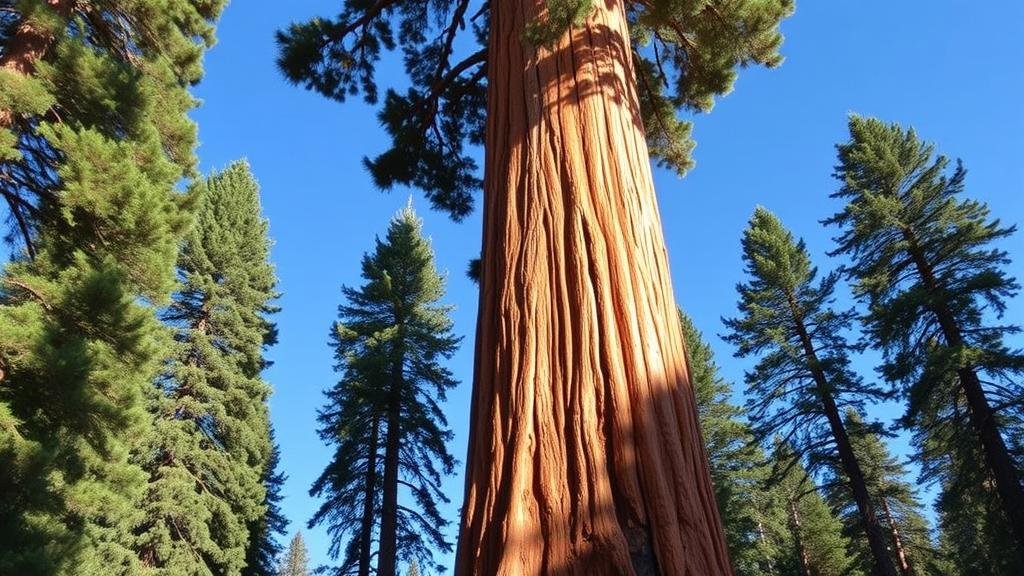Investigating the towering giant sequoias of California’s Sierra Nevada.
Investigating the Towering Giant Sequoias of California’s Sierra Nevada
The giant sequoias, scientifically known as Sequoiadendron giganteum, are among the most majestic and colossal trees on Earth. Located primarily in the Sierra Nevada mountains of California, these ancient giants have captivated the imagination of naturalists, tourists, and environmentalists alike. Their immense size and longevity make them a vital component of the ecosystem and a vital part of California’s natural heritage.
A Brief History of Giant Sequoias
The history of giant sequoias dates back approximately 3,000 years, with some of the oldest known specimens, like the Grizzly Giant in Mariposa Grove, estimated to be around 2,700 years old. e trees were first documented by European settlers in the mid-19th century, notably by naturalist and explorer John Muir, who played a key role in raising awareness about their ecological importance.
Geographical Distribution
Giant sequoias primarily thrive in a narrow belt along the western slope of the Sierra Nevada mountain range, specifically between 4,000 and 8,000 feet in elevation. This region encompasses several protected areas, such as:
- Sequoia National Park, established in 1890
- Yosemite National Park, home to Mariposa Grove
- Kings Canyon National Park
Within these parks, the largest concentration of giant sequoias can be found in the Giant Forest of Sequoia National Park, which includes the famous General Sherman Tree, the tallest tree on the planet, standing at 275 feet tall and estimated to weigh over 2.7 million pounds.
Ecological Significance
Giant sequoias play an integral role in their ecosystems. They create habitats for various species such as birds, mammals, and insects. bark of these trees is remarkably thick–up to 31 inches in some instances–providing insulation against fire and pests, which allows them to thrive in a fire-prone environment.
According to the National Park Service, the giant sequoia groves sequester carbon dioxide, making them significant players in combating climate change. Their massive biomass holds a substantial amount of carbon; for instance, the entire Giant Forest of Sequoia National Park is estimated to capture around 1.8 million tons of carbon annually.
Threats Facing Giant Sequoias
Despite their impressive resilience, giant sequoias face numerous threats, many of which stem from human activity and climate change. The most pressing challenges include:
- Wildfires: While sequoias are adapted to withstand fires, the increasing frequency and intensity of wildfires due to climate change pose a significant risk.
- Pest Infestations: The bark beetle, for instance, has affected sequoias as warmer temperatures enable these pests to thrive.
- Climate Change: Changes in temperature and moisture not only affect growth rates but can also alter the delicate balance of their ecosystem.
Efforts made to mitigate these threats. For example, park management teams conduct controlled burns to reduce the risk of larger, uncontrolled wildfires and facilitate natural regeneration.
Visiting the Giant Sequoias
For those looking to experience the towering majesty of giant sequoias, the Sierra Nevada offers several accessible groves. Popular destinations include:
- Sequoia National Park: Home to many notable sequoias, including the General Sherman Tree.
- Yosemite National Park: Features Mariposa Grove, which is undergoing restoration to enhance visitor experiences.
- Calaveras Big Trees State Park: Offers family-friendly hiking trails among massive sequoia trees.
Visiting during the late spring or early fall when the weather is temperate allows for comfortable exploration of these incredible natural wonders. Remember to respect park regulations and practice Leave No Trace principles to preserve these ancient giants for future generations.
Actionable Takeaways
Investigating the giant sequoias of California’s Sierra Nevada yields not only a profound appreciation for these magnificent trees but also an awareness of the environmental challenges they face. Here are some actionable takeaways:
- Plan a visit to one of the national or state parks dedicated to preserving giant sequoias.
- Engage in conservation efforts by volunteering with local organizations focused on tree preservation.
- Educate others about the ecological importance of giant sequoias and the challenges they face in light of climate change.
By understanding and advocating for the protection of giant sequoias, we contribute to the preservation of a vital ecological resource that has stood the test of time.



